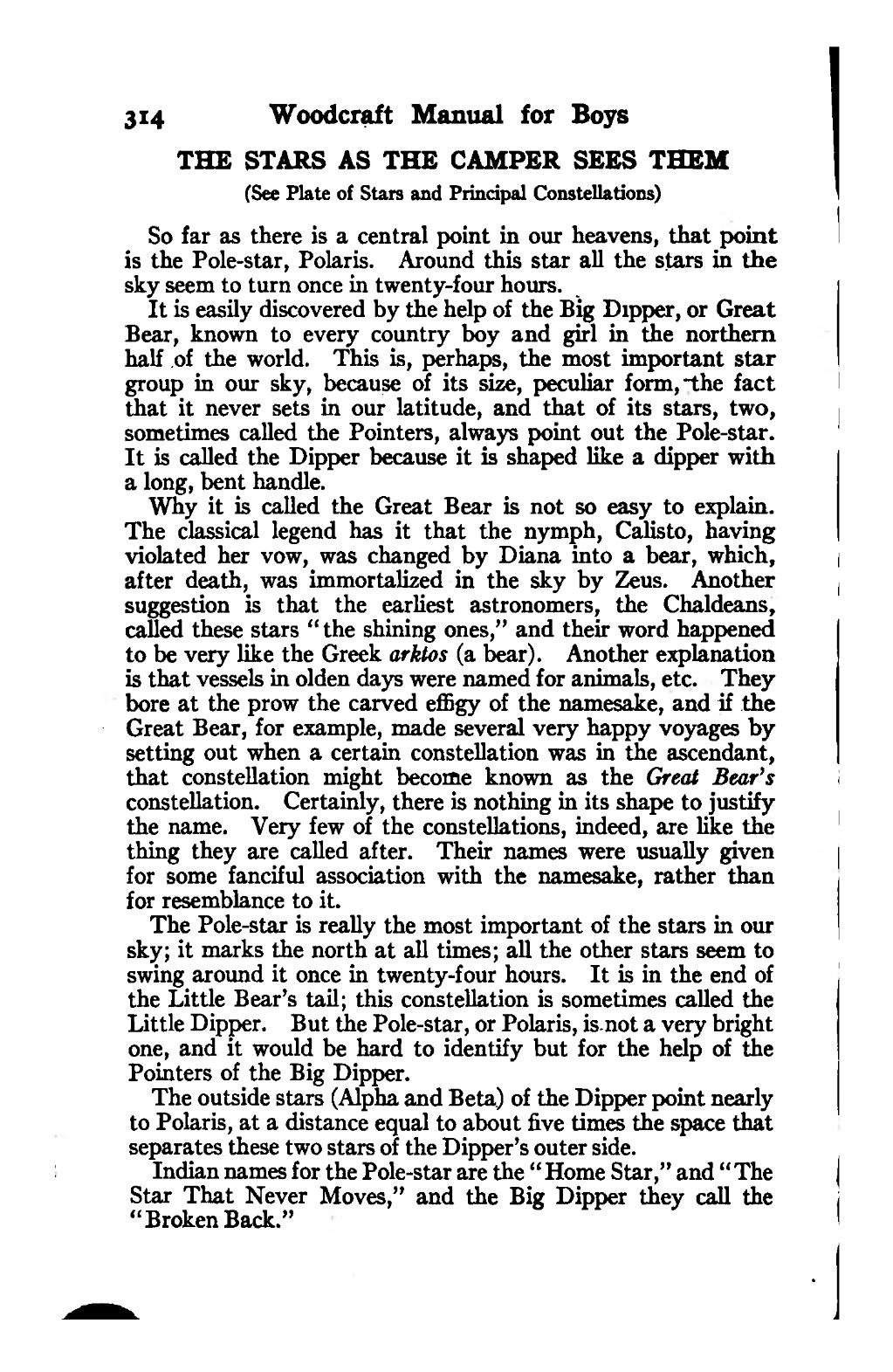314 Woodcraft Manual for Boys THE STARS AS THE CAMPER SEES THEM (See Plate of Stars and Principal Constellations) So far as there is a central point in our heavens, that point is the Pole-star, Polaris. Around this star all the stars in the sky seem to turn once in twenty-four hours. It is easily discovered by the help of the Big Dipper, or Great Bear, known to every country boy and girl in the northern half of the world. This is, perhaps, the most important star group in our sky, because of its size, peculiar form, "the fact that it never sets in our latitude, and that of its stars, two, sometimes called the Pointers, always point out the Pole-star. It is called the Dipper because it is shaped like a dipper with a long, bent handle. Why it is called the Great Bear is not so easy to explain. The classical legend has it that the nymph, Calisto, having violated her vow, was changed by Diana into a bear, which, after death, was immortalized in the sky by Zeus. Another suggestion is that the earliest astronomers, the Chaldeans, called these stars " the shining ones," and their word happened to be very like the Greek arkios (a bear). Another explanation is that vessels in olden days were named for animals, etc. They bore at the prow the carved eflSgy of the namesake, and if the Great Bear, for example, made several very happy voyages by setting out when a certain constellation was in the ascendant, that constellation might become known as the Great Beards constellation. Certainly, there is nothing in its shape to justify the name. Very few of the constellations, indeed, are like the thing they are called after. Their names were usually given for some fanciful association with the namesake, rather than for resemblance to it. The Pole-star is really the most important of the stars in our sky; it marks the north at all times; all the other stars seem to swing around it once in twenty-four hours. It is in the end of the Little Bear's tail; this constellation is sometimes called the Little Dipper. But the Pole-star, or Polaris, isnot a very bright one, and it would be hard to identify but for the help of the Pointers of the Big Dipper. The outside stars (Alpha and Beta) of the Dipper point nearly to Polaris, at a distance equal to about five times the space that separates these two stars of the Dipper's outer side. Indian names for the Pole-star are the " Home Star," and "The Star That Never Moves," and the Big Dipper they call the "Broken Back."
Stránka:roll 1917.djvu/346
Z thewoodcraft.org
Tato stránka nebyla zkontrolována
